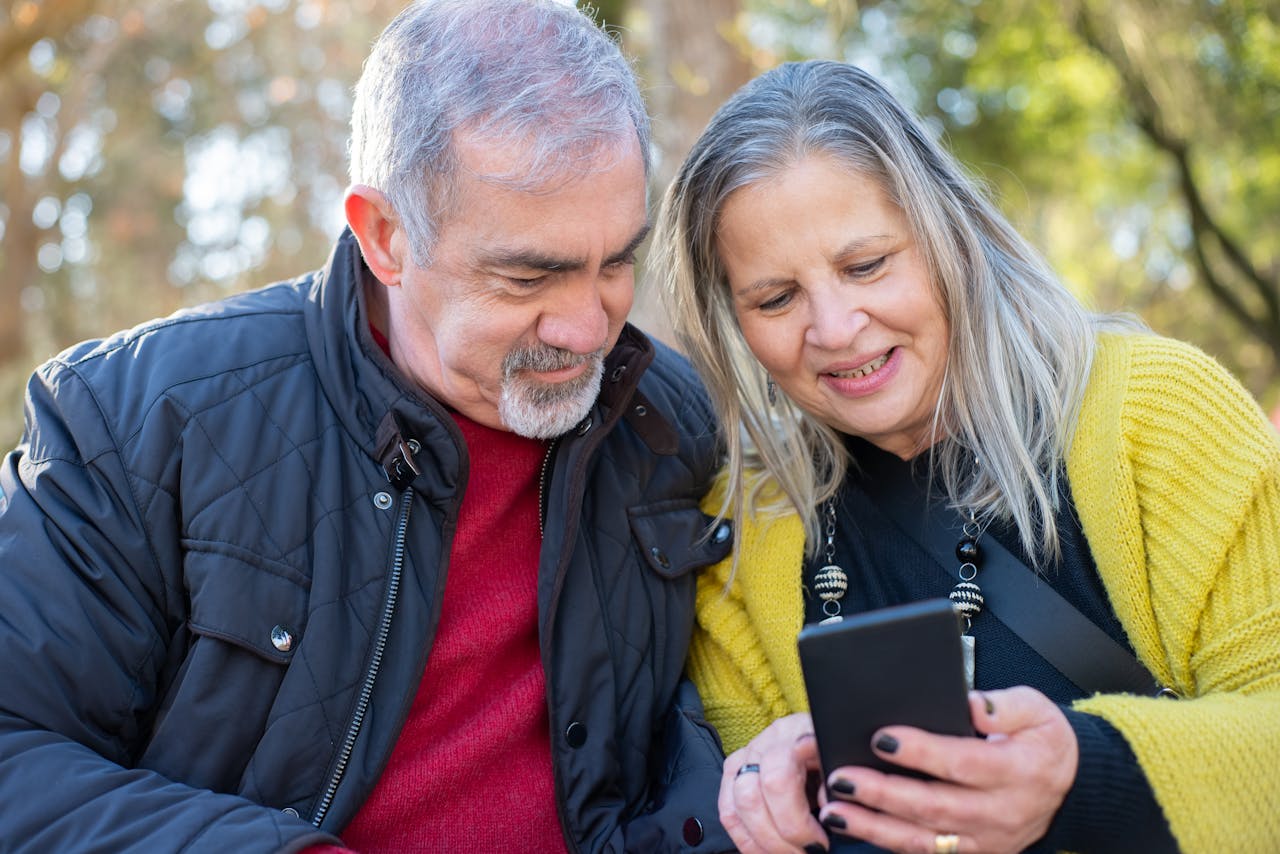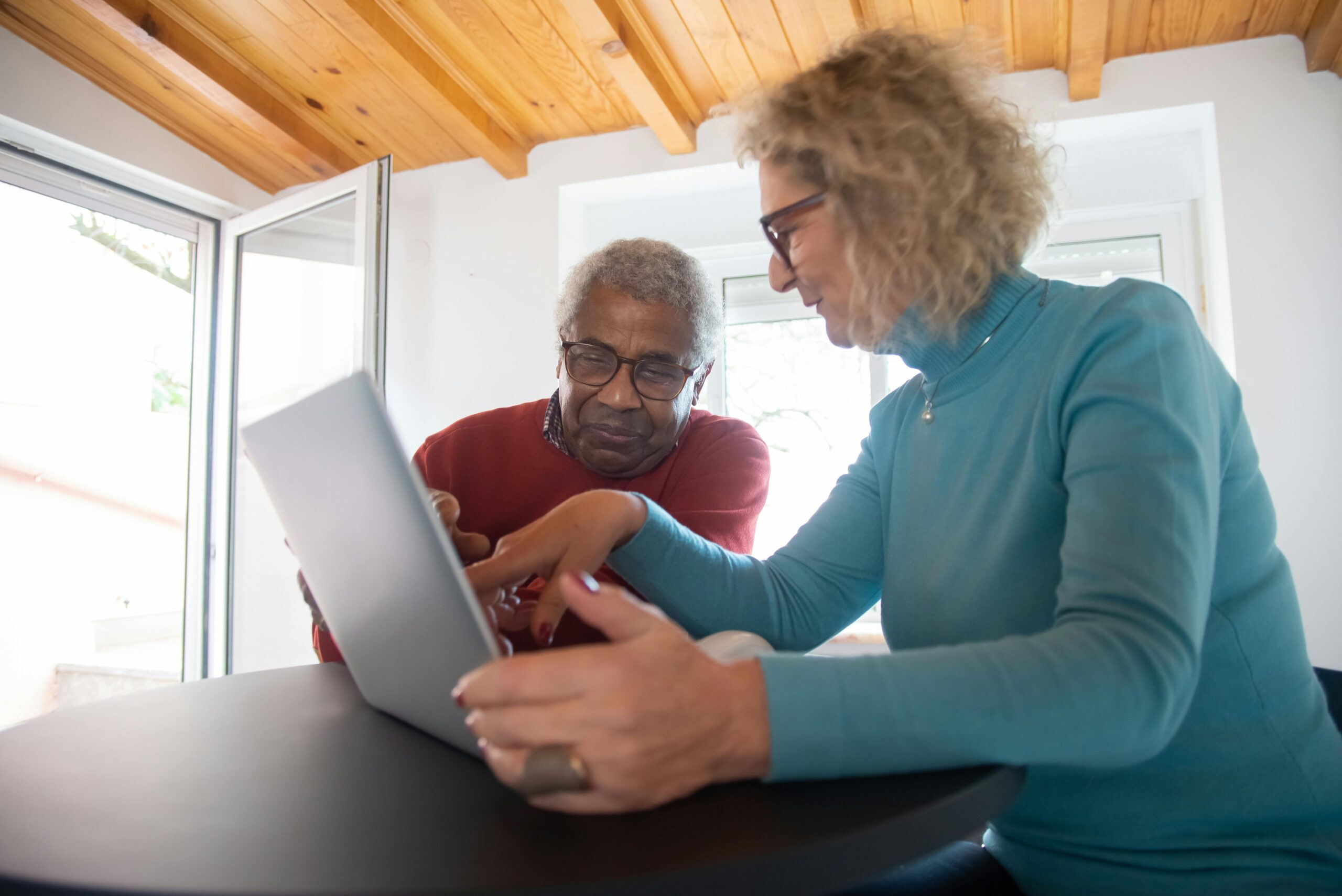Wearable technology for elderly individuals represents a significant advancement in the realm of health monitoring and personal safety. This innovative class of devices encompasses a variety of gadgets, including smartwatches, fitness trackers, and specialized health monitors, designed specifically to meet the needs of seniors. As the global population ages, the demand for technology that can enhance the quality of life for older adults continues to grow, leading to a broader acceptance and integration of these tools into daily routines.
The primary function of wearable technology for seniors is to facilitate health surveillance. Many of these devices can track vital signs, such as heart rate and blood pressure, providing real-time data that can be invaluable for both users and their healthcare providers. This monitoring capability not only enables early detection of potential health issues but also encourages seniors to take a proactive approach to their well-being. Furthermore, these gadgets can serve as a reminder for medication schedules, ensuring adherence to prescribed treatment regimens.
In addition to health monitoring, wearable technology offers enhanced safety features for elderly users. Devices equipped with fall detection sensors can automatically alert caregivers or emergency services in case of an accident, significantly improving response times and potentially saving lives. Moreover, GPS tracking capabilities can enable family members to monitor the location of their loved ones, providing peace of mind and fostering independence. This connectivity is further reinforced by the ability of these devices to facilitate communication, enabling seniors to stay in touch with family and friends, thereby reducing feelings of isolation.
With the transformative potential of wearable technology for elderly individuals, it is evident that these advancements are not merely conveniences; they are essential tools that promote safety, health, and connectivity. As the industry continues to evolve, these devices will undoubtedly play a crucial role in reshaping how seniors engage with the world around them.
Key Features of Wearable Devices for the Elderly
Wearable technology for the elderly offers a range of features specifically designed to address the unique needs of older adults, making them an invaluable tool for enhancing safety and well-being. One of the foremost characteristics of these devices is their user-friendly interfaces. Given that many elderly individuals may not be technologically savvy, designing intuitive and easy-to-navigate systems is essential. Touchscreens with large icons, voice commands, and clear displays help ensure that older users can interact with the device without frustration.
In addition to accessibility, health monitoring capabilities play a critical role in wearable technology for the elderly. Devices often include functions for tracking vital signs such as heart rate and blood pressure. These features enable seniors to maintain awareness of their health metrics and allow caregivers to monitor changes that could indicate a need for medical intervention. Moreover, advanced wearables may offer fall detection technology, which automatically alerts emergency contacts or services if a fall occurs, providing an additional layer of security for older adults who may live alone.
Another significant aspect of these devices is their emergency alert systems. Most wearables come equipped with panic buttons or automated alerts that can be activated in case of emergencies, ensuring that help is always a few taps away. This feature not only gives peace of mind to the wearer but also alleviates concerns for their family members. Lastly, compatibility with other devices is vital; many wearables seamlessly integrate with smartphones or home monitoring systems. This connectivity allows for enhanced functionality and the consolidation of health data in one accessible location, further promoting the effectiveness of wearable technology for elderly care.
Health Monitoring Wearables: Keeping Track of Health Metrics
Health monitoring wearables have become instrumental in helping the elderly manage their health effectively. These devices empower seniors to monitor vital health metrics such as heart rate, blood pressure, glucose levels, and physical activity seamlessly. By providing real-time feedback, they can significantly enhance well-being and promote proactive health management among older adults.
Diabetes management is one area where wearable technology for elderly individuals excels. Devices like continuous glucose monitors (CGMs) allow users to track their blood sugar levels throughout the day. This data can be crucial for preventing dangerous highs and lows, offering alerts to users and their caregivers about potential health risks. Major brands, such as Dexcom and Abbott, offer CGMs that connect to smartphones, making it convenient for seniors to keep track of their condition without invasive finger-pricking methods.
Heart health is another critical aspect that can be monitored with wearables. Smartwatches, such as the Apple Watch and Fitbit, are equipped with heart rate sensors that provide insights into resting heart rates and alert users to irregularities that may indicate conditions such as atrial fibrillation. These features enable timely intervention and consultation with healthcare providers, ensuring that any anomalies are addressed promptly.
Fitness tracking has also gained prominence among health monitoring wearables for elderly users. Devices like the Garmin Vivosmart and the WHOOP strap not only count steps but also assess sleep quality and overall activity levels. By encouraging movement and monitoring sedentary behavior, these wearables play an essential role in maintaining physical fitness and reducing the risks associated with a sedentary lifestyle.
In conclusion, health monitoring wearables represent a significant advancement in fostering the health and safety of elderly individuals. The integration of these technologies into daily life can lead to improved health outcomes and a greater sense of independence, reinforcing the importance of adopting wearable technology for elderly citizens.
Safety Features: Fall Detection and Emergency Alerts
The emergence of wearable technology for the elderly has significantly transformed the landscape of personal safety, particularly through innovative features such as fall detection and emergency alerts. These technologies are critical in addressing the heightened risk of falls among seniors, which can lead to severe injuries or even fatalities. Wearables often utilize accelerometers and gyroscopes to detect unusual movements that indicate a fall. When such an event is detected, the device can automatically alert caregivers or emergency services, ensuring a swift response when it is most needed.
Fall detection systems typically allow for custom settings, enabling seniors or their families to define thresholds for alerts according to individual needs. This aspect of wearable technology is particularly essential as it enhances autonomy while still providing a safety net. The immediacy of the alerts can drastically reduce the time that elapses before assistance is administered, greatly improving health outcomes for elderly individuals who experience falls. Studies indicate that rapid intervention can significantly lower the risks associated with falls, including long-term disabilities, hospitalizations, and mental health issues stemming from such incidents.
In addition to fall detection, wearable technology often includes emergency alert functions. Many devices enable seniors to send a distress signal simply by pressing a button or using voice commands. This can be invaluable in scenarios where a senior feels unsafe or requires assistance but cannot reach their phone. Family members can also be notified through the connected app, which fosters an additional layer of reassurance. Overall, these safety features play an integral role in promoting independence while ensuring peace of mind for both seniors and their loved ones, creating a supportive environment rooted in advanced technology.
Connectivity and Communication: Staying in Touch
The advent of wearable technology for elderly individuals has transformed the landscape of communication, making it easier for them to remain connected with their loved ones. These devices often incorporate call and text capabilities, allowing seniors to easily reach out to family and friends without needing to navigate complex interfaces typically found on smartphones. For older adults who may experience difficulty using standard mobile phones, wearables present a user-friendly alternative that encourages social interaction.
Many wearable devices are designed with large, easy-to-read screens and simplified navigation, emphasizing essential functions such as quick access to contact lists. Additionally, these gadgets can typically be synchronized with smartphones, enhancing their usability. This integration allows elderly users to receive notifications about messages and calls in real-time, ensuring they never miss out on important communications. Furthermore, some of these devices also feature voice-activated commands, enabling seniors to initiate calls or send messages effortlessly, thus reducing the barriers often associated with traditional communication methods.
Moreover, maintaining connectivity through wearable technology can significantly alleviate feelings of loneliness in the elderly population. By facilitating constant and reliable communication, seniors can stay in touch with family members, friends, and caregivers, thereby fostering meaningful relationships. These devices often come equipped with social media applications, which further allow users to share updates and engage with their loved ones, promoting a sense of belonging. Consequently, through the development and integration of wearable technology for elderly individuals, the potential for enhanced communication and reduced social isolation is profoundly significant.
Popular Wearable Devices for the Elderly
As the demand for wearable technology for elderly individuals continues to rise, several devices have emerged as popular choices among users and caregivers alike. These devices not only promote safety and well-being but also foster independence for seniors. Below, we will explore some of the leading wearable options available today, focusing on their key features, pricing, and user feedback.
One of the most well-regarded devices is the Apple Watch Series 8. Known for its high-quality build and versatile functionality, this smartwatch includes features such as fall detection, heart rate monitoring, and an ECG app. Prices typically start around $399, making it a premium option but one that offers a multitude of health features beneficial for elderly users. Users often commend its ease of use and comprehensive health tracking capabilities.
Another noteworthy option is the Fitbit Charge 5, which offers advanced health metrics like stress management and sleep tracking. Priced at approximately $179, this device provides a more budget-friendly solution without sacrificing essential features that cater specifically to seniors. User reviews highlight its comfortable design and effective activity tracking, making it suitable for everyday use.
The Garmin Forerunner 245 is also gaining popularity, especially among those interested in fitness tracking. This wearable technology for elderly individuals includes GPS features and detailed performance metrics. Typically priced at $299, users report that it is highly effective for monitoring outdoor activities while offering a robust community for additional motivation.
Lastly, the GreatCall Lively Wearable2 stands out as a device specifically designed for seniors. This device functions as both a fitness tracker and a medical alert system. Beginning at $49.99, it combines affordability with essential safety features, providing peace of mind for caregivers. Users appreciate the simplicity and reliable emergency response feature, essential for enhancing safety in daily activities.
In conclusion, finding the right wearable technology for elderly individuals can significantly enhance their quality of life. With options ranging from comprehensive smartwatches to specialized medical alert devices, caregivers can make informed choices tailored to the needs of their loved ones.
Considerations When Choosing Wearable Technology
When selecting wearable technology for elderly individuals, several critical factors must be taken into account to ensure that the device is both practical and effective. The usability of the technology is paramount; it should be user-friendly and straightforward to operate for seniors, many of whom may have limited experience with advanced gadgets. A simple interface with clear instructions can significantly enhance the adoption of wearable technology for elderly users. Touchscreens should be large and responsive, while buttons should be easy to press.
Battery life is another essential factor to consider. Wearable devices should have a long battery life to minimize the need for frequent recharging, which can be cumbersome for elderly users. Devices equipped with power-saving features or that allow for extended use without battery interruption are particularly advantageous. It may be beneficial for caregivers to choose a wearable technology that includes a low-battery notification to facilitate timely charging.
Compatibility with other devices must also be evaluated when selecting wearable technology. Many seniors may already have smartphones, tablets, or computers that they use daily. Ensuring that the wearable technology can seamlessly connect to these devices can enhance its functionality and make it easier for users to access important health information. Additionally, compatibility with existing health applications can provide caregivers with comprehensive monitoring tools, resulting in better health management.
Lastly, specific health features tailored to the needs of seniors should be included in the evaluation process. Popular features such as heart rate monitoring, fall detection, medication reminders, and emergency alert systems are critical in enhancing safety and well-being. By considering these factors, caregivers can make informed choices about wearable technology for elderly individuals, helping to improve their quality of life.
Future Trends in Wearable Technology for Seniors
The landscape of wearable technology for elderly individuals is on the cusp of remarkable evolution, driven by ongoing innovations and advancements in various fields. One of the most significant areas of growth is the integration of artificial intelligence (AI) and machine learning. These technologies empower wearable devices to analyze patterns in users’ health data, predicting potential health issues before they escalate. For instance, wearables can monitor heart rates, sleep quality, and physical activity, providing insights that enable seniors to maintain an active and healthy lifestyle.
Another pivotal trend is the integration of smart home technologies with wearable devices. This synergy enhances the safety and independence of elderly users by facilitating real-time communication with caregivers and emergency services. Wearable technology can be programmed to automatically alert designated contacts in case of falls or medical emergencies, ensuring swift assistance. Furthermore, wearable devices can work in tandem with smart home systems to control lighting, temperature, and security features, allowing seniors to manage their environments efficiently.
Moreover, the focus on personalized healthcare solutions is gaining traction, emphasizing the importance of tailored experiences for seniors. Wearables are increasingly designed with user-centric interfaces that allow older adults to customize their monitoring preferences based on individual health conditions. This personalization ensures that seniors are receiving the most relevant data and alerts associated with their specific health requirements, enhancing their engagement with the technology.
As these trends continue to unfold, the future of wearable technology for elderly individuals appears promising. By embracing AI-driven analytics, integrating with smart home systems, and prioritizing personalization in healthcare, the next generation of wearable technology will play a vital role in supporting the health and well-being of seniors. This evolution not only enhances safety but also fosters a sense of autonomy, enriching the overall quality of life for the elderly.
Conclusion: Embracing Technology for a Better Quality of Life
As we reflect on the various aspects of wearable technology for the elderly, it becomes increasingly clear that these innovative devices can significantly enhance safety, health management, and overall quality of life for seniors. The integration of tools such as fitness trackers, smartwatches, and health-monitoring devices has changed how elderly individuals engage with their personal well-being. Not only do these technologies encourage a more active lifestyle, but they also foster a sense of independence that is critical as individuals age.
Wearable technology for elderly care has proven invaluable in promoting proactive health management. Many devices offer features such as heart rate monitoring, fall detection, and medication reminders, which provide peace of mind not only to the seniors using them but also to their families and caregivers. By enabling real-time health monitoring, these tools can facilitate quicker responses to medical issues, ultimately leading to better outcomes. Additionally, the data generated through wearable technology can be shared with healthcare professionals, ensuring that personalized care plans are informed and effective.
Moreover, the emotional and psychological benefits of adopting wearable technology cannot be overlooked. By empowering elderly individuals to take charge of their health, these devices can boost confidence and encourage social interaction. Many wearables come equipped with communication features, allowing seniors to stay connected with loved ones, thereby reducing feelings of isolation. It is essential for families to recognize the potential of these technologies not only to improve physical health but also to enhance emotional well-being.
In conclusion, embracing wearable technology for elderly individuals represents a commitment to improved safety and health management. By leveraging these tools, seniors can enjoy a better quality of life and continue to thrive independently. As society advances, it remains vital for families and seniors to explore and adopt these beneficial technologies for their overall health and happiness.



